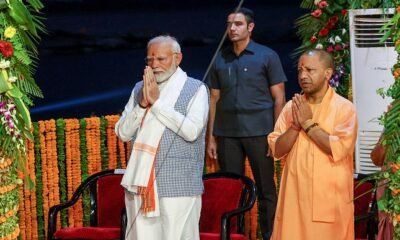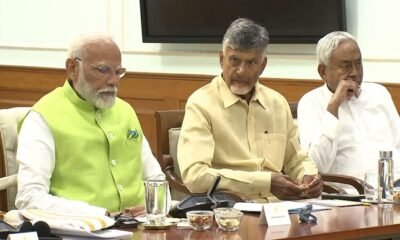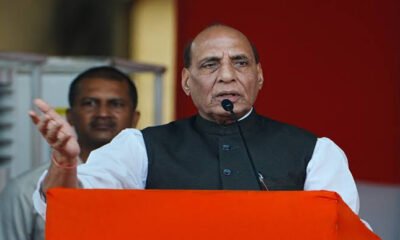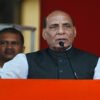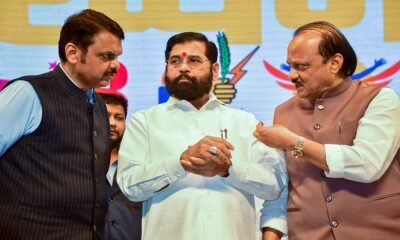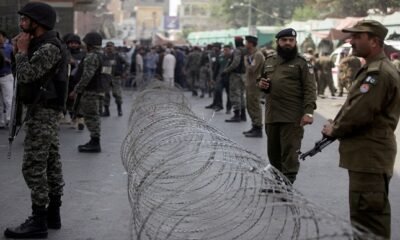National
Re-naming India as Bharat: Nomenclature Conundrum & Judicial Dissect
By Lakshmi Kumari.
The process of naming our country was a tedious task for the Constituent Assembly. There were varying views over choosing a common name & none of the name put up for amendment before, the Constituent Assembly was able to garner consensus among the framers of the Constitution. A faction of Members wanted to name country as Bharat, while others were of different views. Ultimately, framers of the Constitution agreed to choose two names: ‘India’ &‘Bharat’. Our country is unique in the sense that, at social level we choose to follow ‘Bharat’ as our country name while, at international level the name ‘India’ prevails. Since Independence, there have been several instances to rename our country as ‘Bharat’ only & remove ‘India’ altogether from Article 1 of the Constitution. The proponents of naming ‘Bharat’ are of the view that later signifies the era of slavery while, former truly depicts the true spirit of our origin & weighed upon its ancient context. Recently, Public Interest Litigation/PIL has been filed to rename our country as Bharat only. This has re-ignited the question of naming our country in the context of keeping intact its diversity & preserving geopolitical significance. Amid all these nomenclature conundrum, the judicial panacea delivered by the SC as under the mechanism of judicial activism led PIL has been varying in its locus & focus. Nevertheless, it is equally true that the roles of political parties, rise of nationalism, sentiments across civil society, debates across the fourth pillar of democracy i.e. media & other have also played their significant roles in raising the nomenclature syndrome from time to time.
Introduction
In the words of prominent playwright William Shakespeare, “What’s in a name?” Nevertheless, the very quote doesn’t get universally accepted in daily lives. In general, a name is the most prominent identity of an individual, a religion/ a nation. Every name has a history.
Dr. Singhvi: The Chanakya of Federalism in India
Since India’s independence, there have been several occurrences, where petitions have been filed to rename India, but even now & then the same problem keeps lingering over our Government &the Judiciary. In a recent PIL filed, which is concerned with making alteration in the Article 1 of the Constitution & to alter India’s name exclusively as Bharat, the honourable Supreme Court, which is de jure & de facto Guardian of the Constitution, the Apex Court has passed the ball to the Union government. The Court urged that the plea can be converted into representation before the Union for appropriate action.
India’s Nomenclature: Historical Perspective
To understand the nomenclature conundrum, there is need to delve deeper into the history, wherein, different names have been used by the rulers &natives of our country based upon prevalent vistas.
Some Scholars have pointed out that around the 3rd millennium BCE in the Mesopotamian Texts; the word ‘Meluha’ was synonymic to the Indus Valley Civilisation. However, the word lost its significance amid modern political systems developed latter. The earliest recorded name, which continues to be debated, is believed to be “Bharat/Bharata/ Bharatvarsha”. Its roots are traced back to the Puranic literature, and to the epic, Mahabharata, the name’s popularity in modern times is also due to its sustained usage during the freedom struggle in slogan ‘Bharat Mata ki Jai!’
There are few other names having roots embedded in Vedas, like ‘Aryavarta’, mentioned in the ‘Manusmriti’, referred to the land occupied by the Indo-Aryans in the region amid the Himalayas in the north &the Vindhya mountain ranges in the south. The name ‘Jambudvipa’ or the ‘land of the Jamun trees’ has also appeared in several Vedic texts, &is still used in a few Southeast Asian countries.
The name ‘Hindustan’ was first used, when the Persians occupied the Indus valley in the 7th Century BCE. ‘Hindu’ was the Persian version of the Sanskrit Sindhu, or the Indus river, &was used to identify the lower Indus basin. At the same time, the Greeks who had acquired knowledge of ‘Hind’ from the Persians, transliterated it as ‘Indus’, &by the time Alexander invaded India in the 3rd Century BCE, ‘India’ had come to be identified with the region beyond the Indus.
Historian Ian J. Barrow in his article titled, ‘From Hindustan to India: Naming change in changing names’, writes that “in the mid-to-late 18th Century, Hindustan often referred to the territories of the Mughal emperor, which comprised much of South Asia.” However, from the late 18th century onwards, British maps increasingly began using the term ‘India’, & name ‘Hindustan’ started to lose its association with all of South Asia.
Assam floods; Life is not all right there
India’s Nomenclature Conundrum Post Independence
Post Independence, the Constituent Assembly set up a Drafting Committee under the chair of Dr. Ambedkar on August 29, 1947. However, the section, ‘name and territory of the Union’ was taken up for discussion only on September 17, 1949. Right from the moment, the first article was read out as ‘India that is Bharat shall be a Union of States’, a division arose among the delegates.
During debates of the Constituent Assembly, H .V. Kamath, a Member of the Forward Bloc, suggested that the Article 1should be replaced as ‘Bharat, or in the English language, India, shall be and such.’ Seth Govind Das, representing the Central Provinces & Berar, on the other hand, proposed: “Bharat known as India also in foreign countries”. Hargovind Pant, who represented the hill districts of the United Provinces, made it clear that the people of Northern India wanted ‘Bharatvarsha’. However, all the suggestions were rejected.
Further, Jawaharlal Nehru in his famous book, “The Discovery of India” has written as under,
“Often, as I wandered from meeting to meeting, I spoke to my audiences of this India of ours, of Hindustan and of Bharata, the old Sanskrit name derived from the mythical founders of the race.”
When The Discovery of India was published, these names, Hindustan, Bharat, India, coexisted in the subcontinent. The name Hind is also there as of constant usage, as in ‘Jai Hind’ (Victory to Hind), the battle-cry that Nehru, like several other political leaders, liked to proclaim at the end of his speeches.
Nomenclature Conundrums, Judicial Dissect & Way Ahead
The continuous nomenclature conundrum started within the tenets of the Constituent Assembly & revolving around our country has been re-emerged as one of the most hot cake of debate even in the 21st Century. In 2005 a retired IAS & freelance journalist V. Sundaram published an article asking to do away with the name ‘India’ & use ‘Bharat’ instead, followed by dismissal of a similar kind of petition in 2016 & supportive argument given by the Apex Court that every India had the right to choose between calling the two Constitutional names & the Court has no business to either dictate or decide for an Indian citizen in pronunciation of his/her motherland.
Most recent, in June 2020, the SC while entertaining a PIL filed by a Delhi-based businessman & related to name alteration from India to Bharat on grounds of inculcating sense of pride in nationality for us & posterity got rejected by the SC, emphasizing upon the presence of both names in the Article 1 of the Constitution itself. However, the Apex Court has suggested the petitioner to reach to the Union in form of representation for the same.
On the Legislative front, in 2014, MP Yogi Adityanath had moved a Private Member Bill in the Lok Sabha seeking substitution of term ‘India’ in the Constitution with Hindustan followed by proposing ‘Bharat’ as the primary nomenclature of the country. Also, Article 3 of the Constitution empowers the Parliament to create new States & alter the areas, boundaries or names of existing States, however there is no such special provision with respect to Country itself.
The politics of nomenclature is integrated with the social production of the nation & it would be an interesting watch how the Union deals with the matter as the nomenclature ball came under its purview. Only time would tell but it is sure that no name could fully encompass the debate that ensued in the Constituent Assembly while debating for naming our country.





